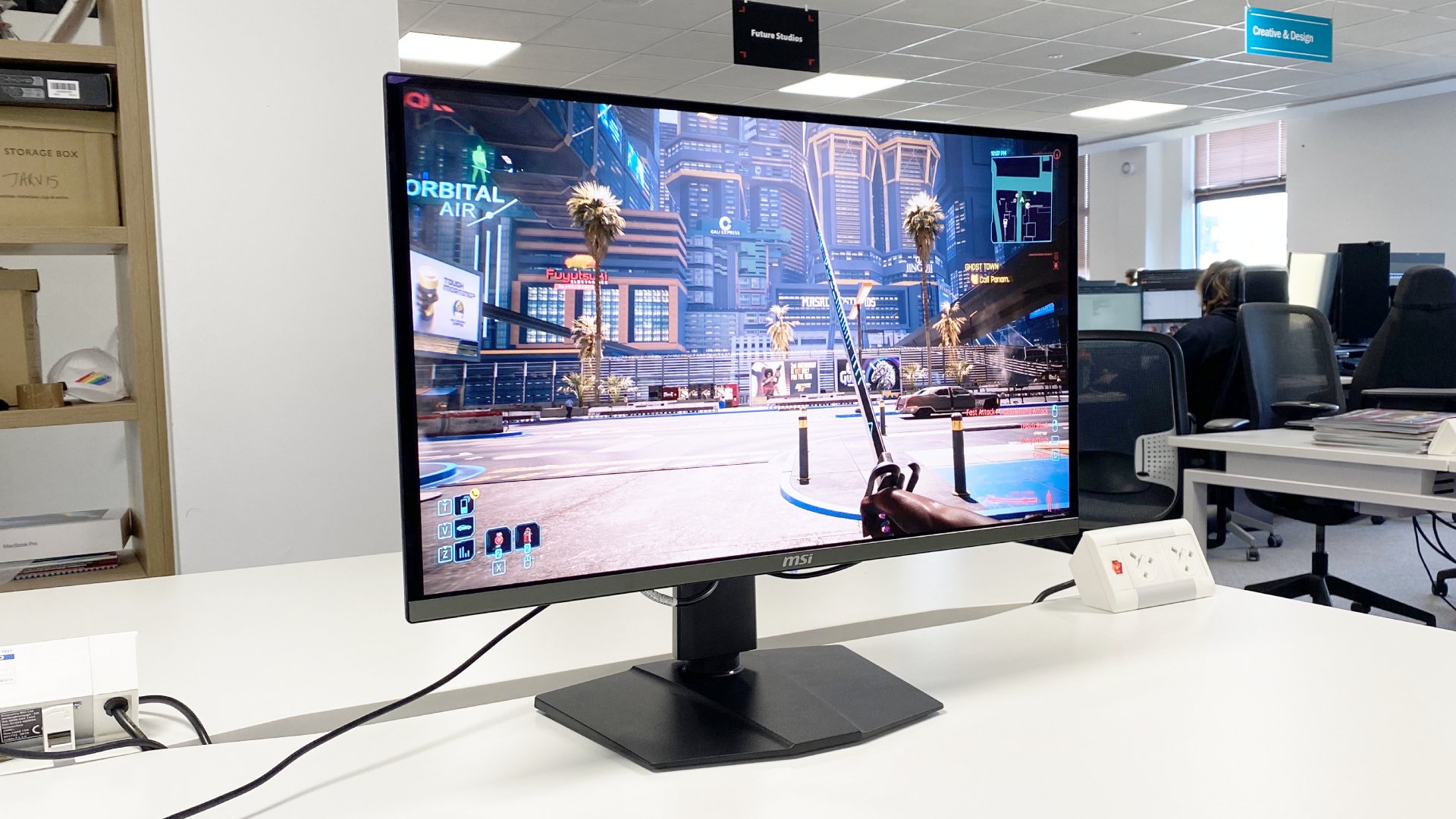
Attention all you gamers hell bent on the ultimate 27-inch 1440p experience. The new MSI MPG 271QRX QD-OLED monitor is here and it wants your money. Quite a lot of it, actually, as this panel has an MSRP of $800 in the US and is listed for pre-orders in the UK for £1,000. Ouch.
Of course, we've seen pricey 1440p OLED panels before. But not one running at 360Hz courtesy of Samsung's revised QD-OLED technology. So, it's not only faster than the first generation of 240Hz 1440p OLED gaming monitors. It's also punchier thanks to that Samsung QD-OLED tech. Previous 1440p gaming OLEDs have relied on LG's earlier WOLED panel tech, which was really pretty poor when it comes to full screen brightness.
Like other recent QD-OLED screens, response times are silly quick at 0.03ms and the colour coverage is excellent at 99% of DCI-P3. As for the broader feature set, you get both a pair of HDMI ports, plus DisplayPort. All three interfaces can do the full 360Hz at 1440p. There's also a USB-C port which supplies a pretty useful 90W of power delivery along with DisplayPort alt mode.
Rounding out the connections is a USB-A hub complete with a KVM switch. The stand is also fully adjustable, including rotation into portrait mode if that's something you care about. It all goes at least some way to justifying the painful pricing, albeit this monitor is very much pitched in line with the OLED competition. It's expensive, to be sure, it's just not particularly expensive compared to the direct OLED alternatives.
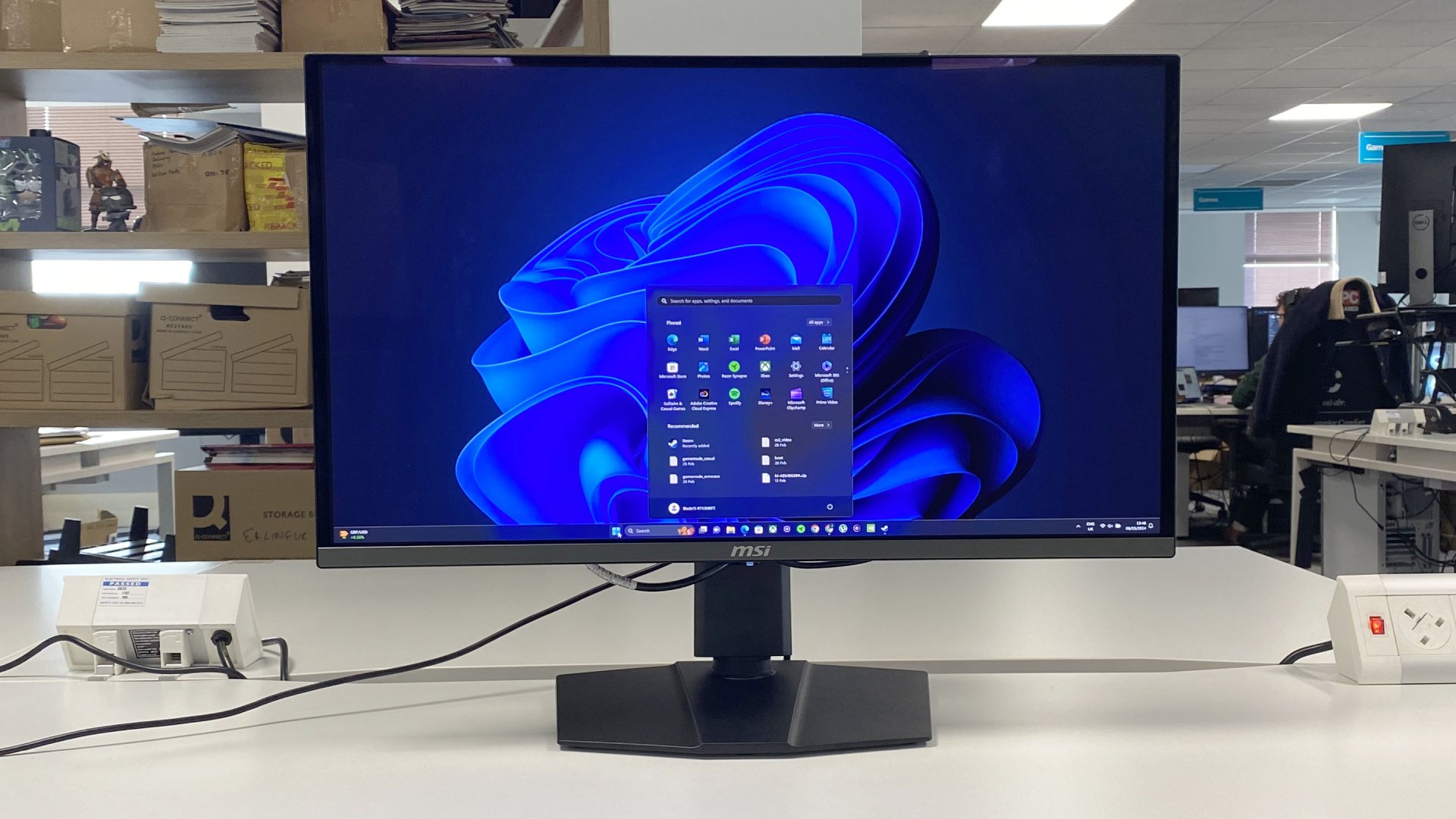
Screen size: 27-inch
Resolution: 2,560 x 1,440
Brightness: 1,000 nits HDR
Color coverage: 99% DCI-P3
Response time: 0.03ms
Refresh rate: 360Hz
HDR: DisplayHDR 400 Trueblack,
Features: QD-OLED panel, adaptive sync, 1x DisplayPort 1.4, 2x HDMI 2.1, 1x USB-C with 90W PD
Warranty: Three years (inc. panel burn in)
Price: $799 / £999 (estimated)
Design-wise, MSI's usual angular, slightly dated early-2000s gamer aesthetic is inevitably in evidence. The back cover is very skinny around the edges of the OLED panel, which is nice and gives a modern feel compared to thicker LCD panels. The rear is thicker in the centre, probably to cater for the screen's custom heatsink.
In truth, however, the plastics and overall vibe don't really feel worthy of the elevated $800 price tag. This doesn't immediately look like a premium product. At this price point, a sleeker, more mature look would probably be preferable for most buyers.
Another purely aesthetic demerit involves the screen bezels. Superficially, it's the usual slim-on-three-sides-plus-a-larger-chin setup seen on so many current monitors. However, this OLED panel has quite a bit of pixel overprovisioning.
That's a good thing for longevity. It gives lots of scope for pixel shifting the image to prevent the dreaded burn in. But it also, in effect, adds to the apparent sizes of the screen bezels, especially the two side bezels. It's not a huge deal, just something to be aware of.

You get three years of burn-in cover from MSI with the 271QRX, so that's pretty reassuring.
Speaking of burn in, this monitor has MSI's OLED Care 2.0 suite of mitigation measures. Of the more novel features are logo and taskbar detection. The idea is to detect when bright static objects like logos and the Windows taskbar are being displayed and lower the brightness only for those elements to reduce the risk of burn-in.
It's hard to actually see that happening with the MSI MPG 271QRX. However, we were running Windows in Dark mode with a black taskbar which probably meant the taskbar detection algorithm wasn't being triggered. Whatever, you get three years of burn-in cover from MSI with the 271QRX, so that's pretty reassuring.
If that's the features, design, and specs covered off, what about the actual viewing experience? It's immediately obvious that this screen has more visual pop than those early LG-based 1440p OLED monitors, including LG's own UltraGear 27GR95QE-B.

Full screen brightness is around 250 nits and while that doesn't sound that impressive, it's a tangible step up over the sub-200 nits of the first generation of LG OLEDs and it's enough for all but the brightest ambient light conditions.
The only slight snag is that you need to run this monitor in HDR mode and then ramp the SDR brightness right up in the Windows display settings to get the best SDR full screen brightness performance.
This thing is decently punchy and has fabulous colours and contrast.
That's probably because in SDR mode MSI is running some kind of automatic brightness limiter (ABL). There's no toggle for on in the OSD menu. But the brightness doesn't vary in SDR when you resize all-white application windows, which is typical when an ABL is running.
There is a little brightness variability in HDR mode, on the other hand, but it's pretty subtle and nowhere near as bad, again, as those disappointing early LG-based models which dimmed dramatically if, for instance, you dared to open a large, mostly white browser window.
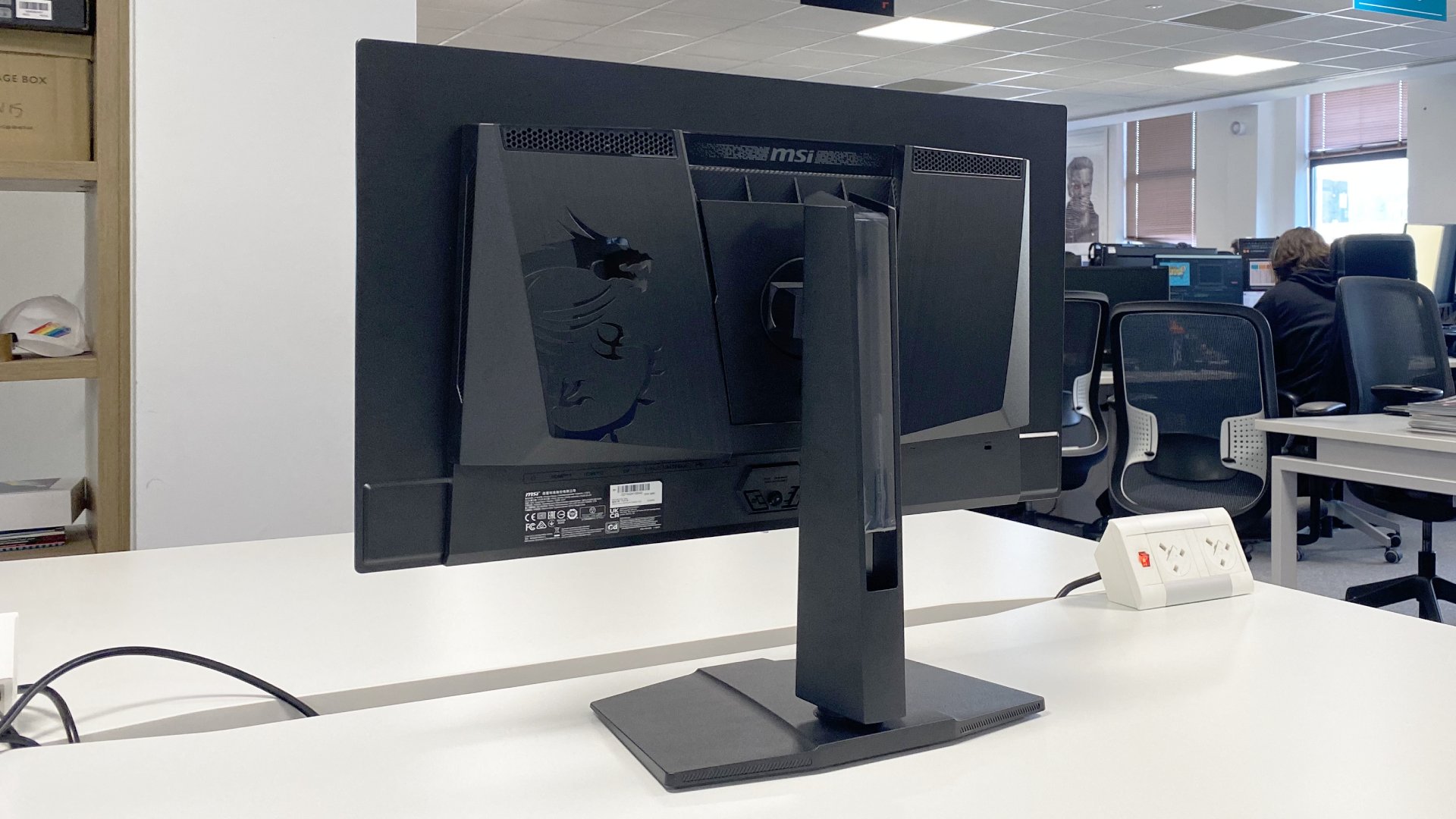
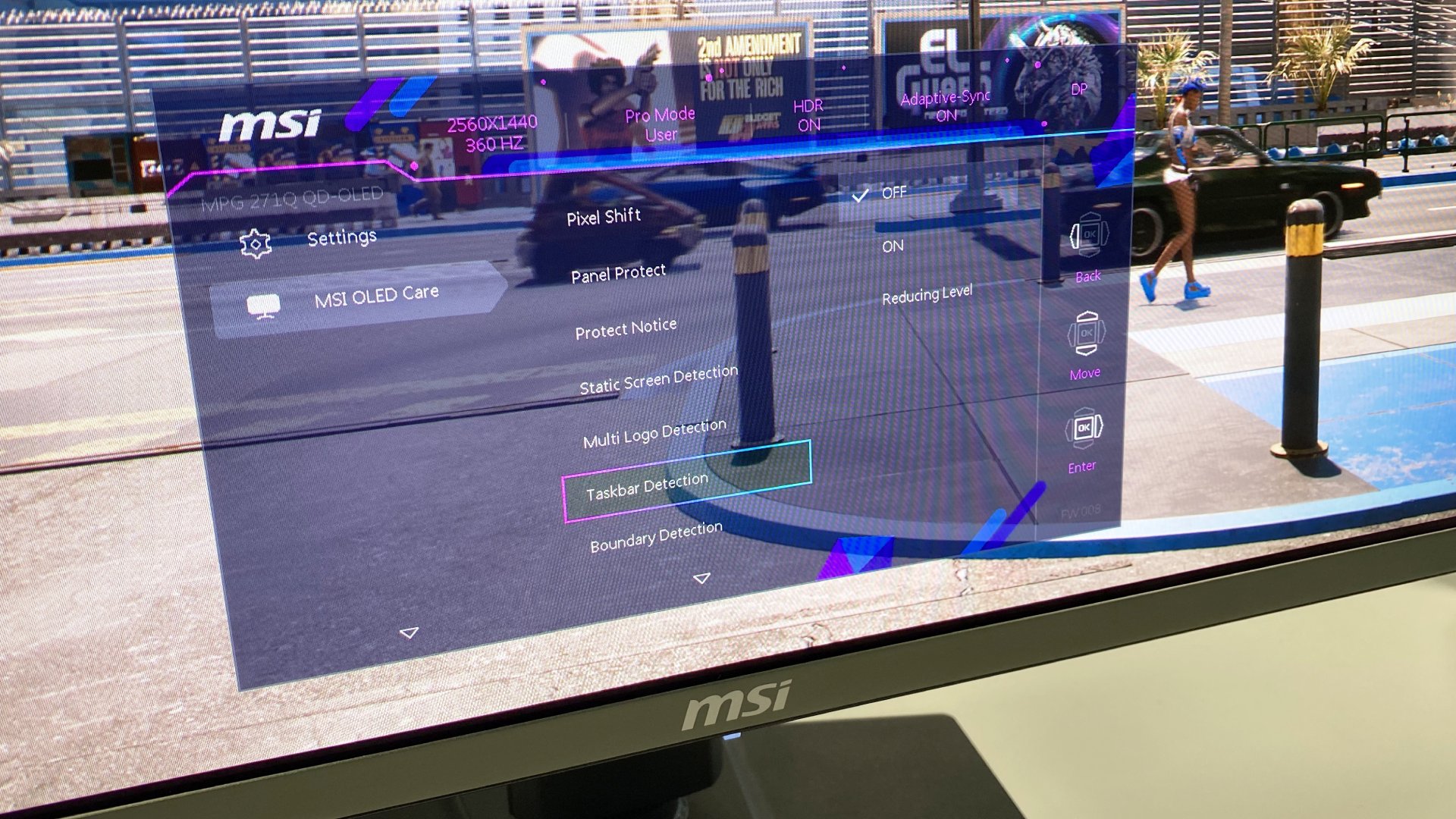


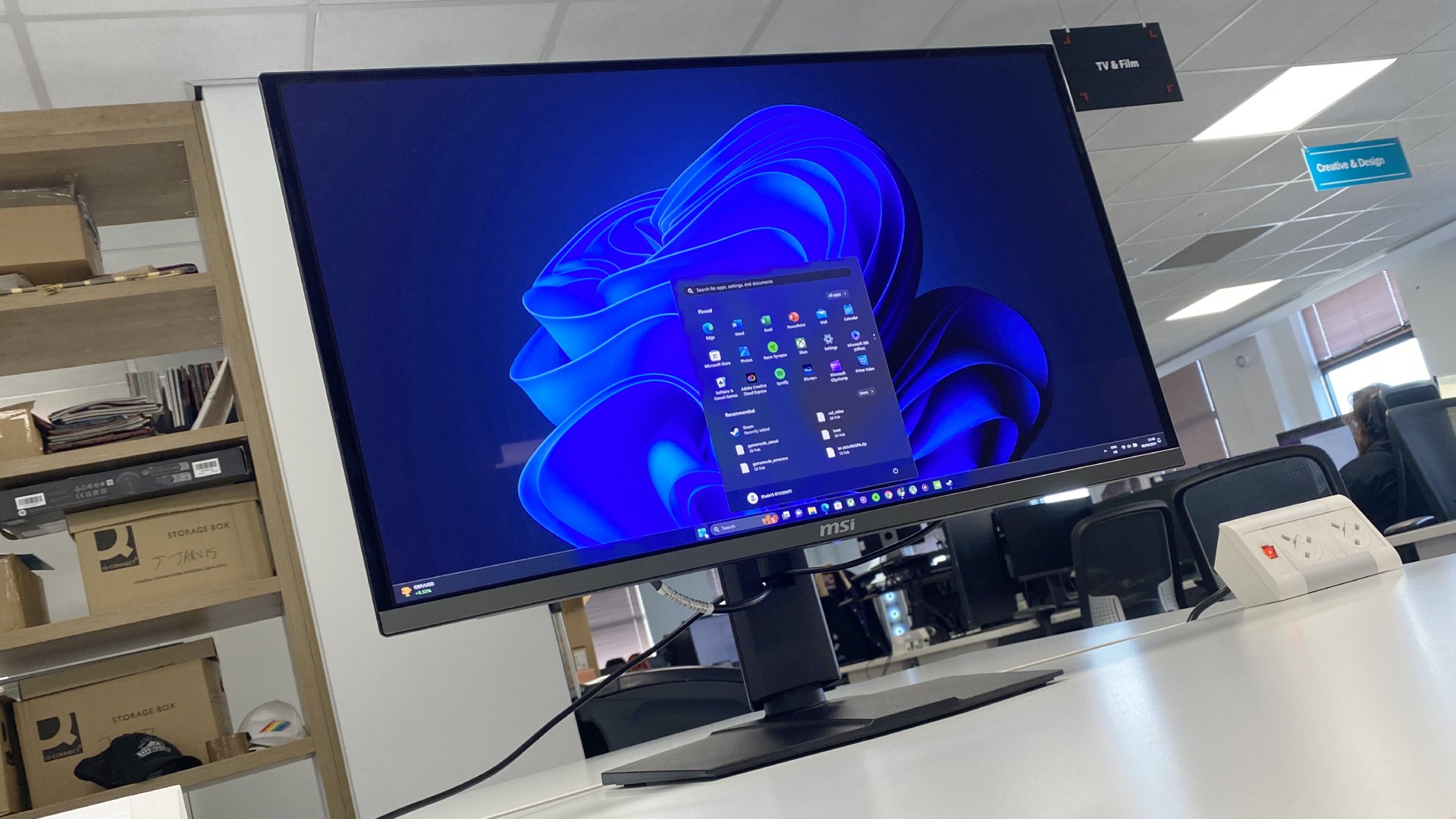
Anyway, this thing is decently punchy and has fabulous colours. It also, obviously, has that perfect per-pixel OLED lighting thing going on and therefore fantastic contrast. On that note, the panel coating is glossy rather than matte, which adds to the sense of deep and inky black levels. Nice.
If you're wondering, yes, this QD-OLED panel does have a slight issue with apparent "greyness" in really bright lighting conditions. It happens because QD-OLED panels don't have a polarising filter and so light striking the display very slightly activates the quantum dot particles which in turn kick a tiny bit of light back. At night it's a total non issue and we'd argue in the day it's only something to worry about, and even then just barely, in really bright ambient lighting conditions.
What is more of a problem is text quality. Samsung's revised QD-OLED tech has a modified subpixel structure which supposedly helps with font rendering. But it still looks pretty soft here and that characteristic pink fringing remains visible. It's not terrible, but if you are very sensitive to slightly fuzzy fonts, you still won't be happy with this improved QD-OLED tech.

Of course, gaming is the main remit and there the MSI MPG 271QRX absolutely delivers. The combination of OLED-powered 0.03ms response times with 360Hz is pretty special. This is about as speedy as desktop display tech currently gets.
Is it worth the massive $500 price premium in that regard over, say, the $300 Asus ROG Strix XG27ACS and its 1ms, 180Hz IPS panel? Probably not.
Playing, say, CS: GO on both panels this MSI is definitely superior in terms of latency and clarity.However, it doesn't feel several times better. Just a little bit better. But then insisting on the very best performance usually means paying through the nose for it. The same applies to the HDR performance. It's really, really (really) nice. Dark scenes punctuated by neon lighting in Cyberpunk, for instance, look out of this world.
So, this is a spectacularly good gaming panel. The problem, as ever with OLED, is price. At $800 for a mere 27-inch 1440p monitor it feels like megabucks when you have screens like the aforementioned Asus which are awfully good for just $300.
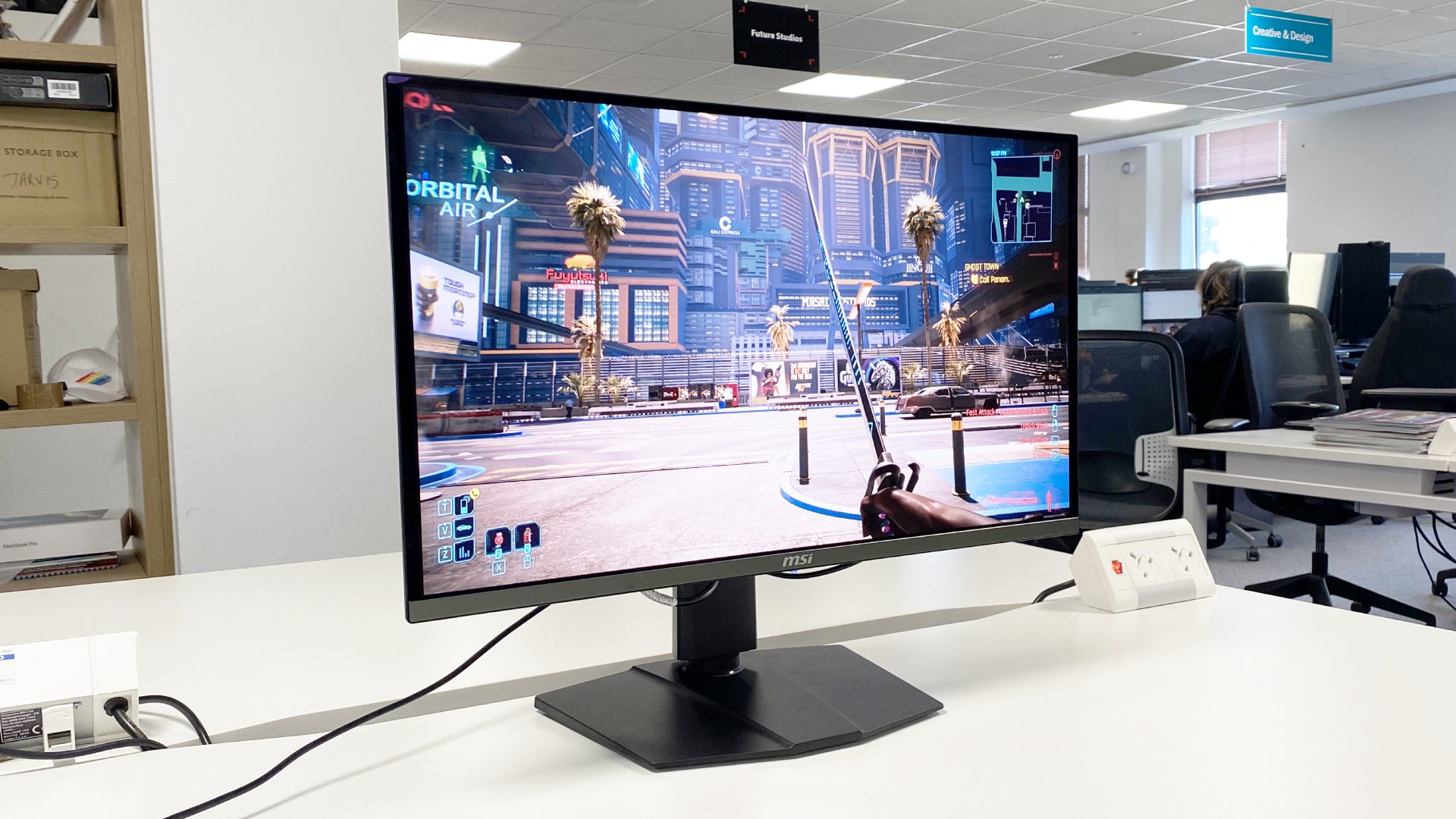
At the same time, the Alienware 34 AW3423DWF remains available for the same $800 price point. That's a 34-inch ultrawide model with QD-OLED tech, albeit first-gen and running at 165Hz. But it still feels like the better deal thanks to that much more immersive 34-inch ultrawide form factor.
✅ You want the ultimate 1440p panel: This is the fastest, most responsive 1440p monitor we've seen.
❌ You want a big, immersive experience: The 16:9 a-aspect 27-inch feels a bit puny at this price point.
So this MSI does little wrong and a whole lot right. The image quality is mostly fabulous. It's just this segment of the market, the 27-inch 1440p OLED gaming monitor, feels like poor value next to the alternatives. One of those alternatives is MSI's own 32-inch 4K OLED, the MPG 321URX, which at its $999 launch prices feels like it offers way more screen and a tonne more pixels for a reasonable premium.
If for whatever reason you want 27-inch 1440p above all else, this is the best yet example of the breed we've seen. It's truly excellent. But that aside and most importantly for the money, it doesn't make much sense for most gamers.







